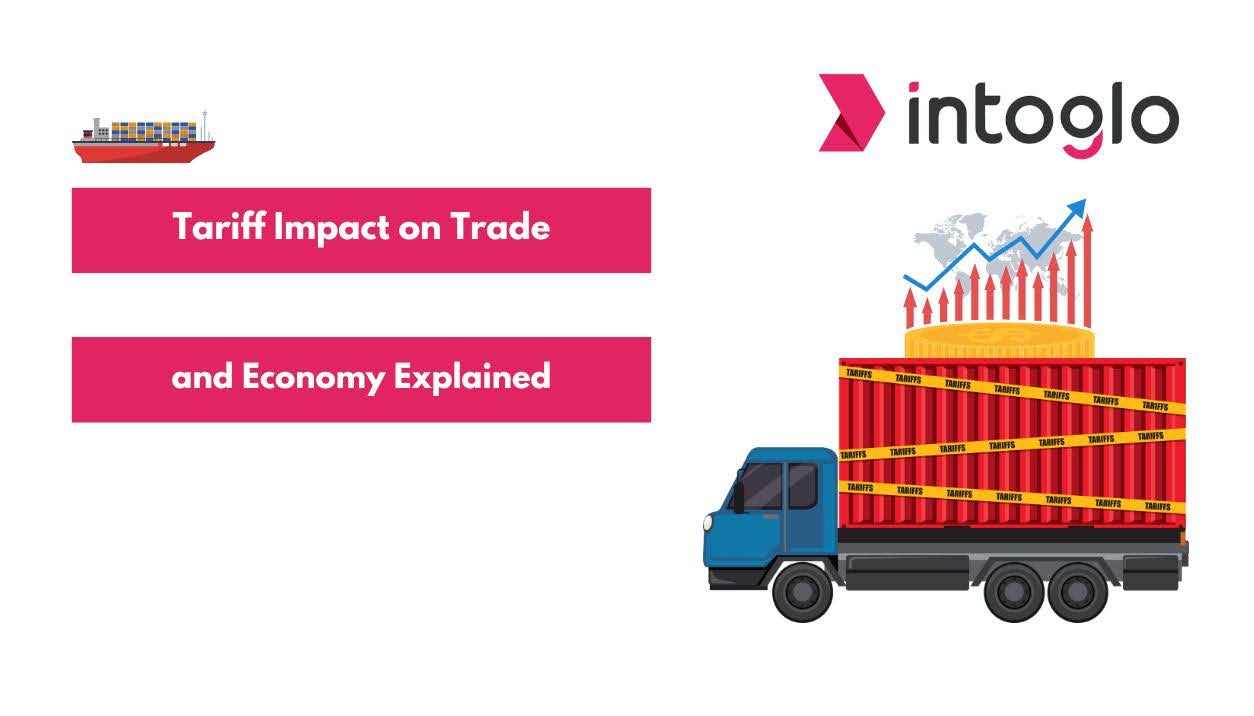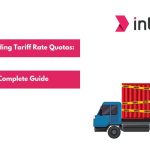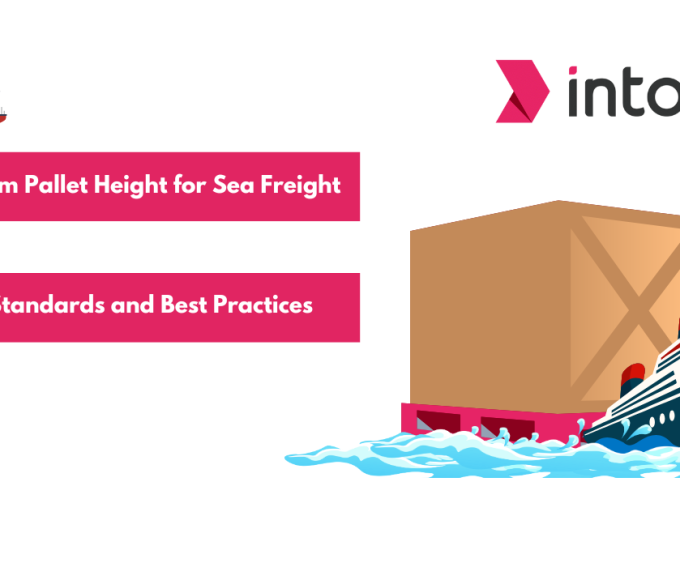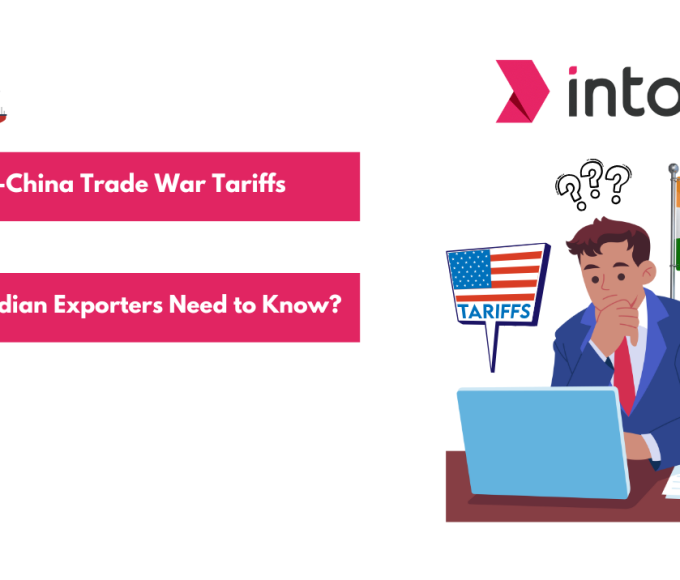If you’re a business exporting goods from India to the U.S., you’ve probably faced the challenge of unexpected costs and delays. One major factor that can throw off your budget and timelines is tariffs. In fact, The Budget Lab estimates that tariffs imposed up until 2025 will raise $2.7 trillion over the next decade, but with substantial negative effects on GDP and consumer prices. This highlights just how significant tariffs are in shaping not only your costs but also the broader economy.
In this blog, we’ll explain how tariffs influence trade and the global economy in simple terms. We’ll explore key economic theories, real-world examples, and recent policy changes, helping you better navigate the complex world of tariffs. By the end, you’ll understand how staying informed about tariffs can help your business avoid surprises and plan more effectively for international shipping. Let’s get started!
What are Tariffs and Their Role in Trade?
In simplest terms, a tariff is a tax imposed on goods as they cross international borders. Governments typically apply tariffs to imports to protect domestic industries, raise revenue, or retaliate against unfair trade practices. There are several types of tariffs that countries use depending on their specific goals:
- Ad Valorem Tariffs: A percentage of the product’s value. The higher the value, the higher the tariff.
- Specific Tariffs: A fixed fee based on the quantity or weight of the imported goods.
- Compound Tariffs: A mix of both ad valorem and specific tariffs.
Tariffs are applied based on the correct classification of products, which is why understanding HS codes is crucial. Intoglo’s AI-powered HS Code Scanner allows you to easily identify the right HS code for your products, ensuring accurate tariff classification.
Suggested Read: HS Code 62034231 for Men’s Trousers and Tariffs to learn more about classification and tariff details.
This shift in prices often sparks a deeper debate between two key economic ideologies: protectionism and free trade. To understand the full impact of tariffs, it’s essential to explore these opposing viewpoints and see how they influence the global economy and trade policies.
Economic Theories Surrounding Tariffs
Tariffs are often shaped by two key economic ideas: protectionism and free trade. Protectionism supports tariffs to shield local industries, while free trade advocates for fewer barriers to encourage competition and lower prices. Let’s explore both perspectives to understand how they influence global trade.
1. Support for Tariffs: Protection of Local Industries
Many argue that tariffs are necessary for protecting domestic industries, especially those that are just emerging or struggling to compete internationally. Some of the key reasons include:
- Protection from Unfair Trade Practices: Tariffs help counter unfair practices like dumping, where foreign companies sell goods at below-market prices to gain market share.
- Infant Industry Argument: New industries that are not yet competitive need protection to grow and mature, allowing them to become strong enough to survive without tariff protection.
2. Criticism of Tariffs: Negative Economic Impact
Despite these arguments, tariffs often face criticism for their negative economic consequences, which include:
- Higher Consumer Costs: Increased tariffs raise the price of imported goods, leading to higher consumer costs and reduced purchasing power.
- Economic Inefficiencies: Tariffs may lead to the inefficient allocation of resources, as businesses may be forced to buy from less competitive, higher-cost domestic sources.
- Trade Wars: Tariffs can spark retaliatory measures from trading partners, escalating into trade wars that disrupt global trade and harm businesses.
While tariffs can provide short-term protection for local industries, they also come with significant drawbacks, including higher consumer costs and potential trade wars. These trade-offs highlight the complexity of tariff policies and their long-term impact on global trade. To fully understand the consequences of tariffs, we can look at how they have shaped global trade history, from past economic crises to current international disputes.
Historical Impact of Tariffs on Global Trade
Throughout history, tariffs have played a key role in shaping economies, from the Great Depression to modern-day trade disputes. By examining past events, we can gain insights into how tariffs have influenced global commerce and the long-term consequences of protectionist policies. Let’s take a closer look at some key historical moments where tariffs made a significant mark.
1. The Great Depression
The Smoot-Hawley Tariff Act of 1930 is a classic example of how protectionist policies can backfire. The U.S. raised tariffs on hundreds of goods to protect American businesses during the Great Depression. However, this led to significant retaliation from other countries, causing a sharp decline in global trade and deepening the economic downturn. Here’s a look at the key consequences:
- Imposed tariffs on hundreds of goods to protect domestic industries.
- Retaliation from other nations led to a dramatic decrease in international trade.
- Economic consequences included a deeper global economic downturn.
2. Retaliatory Tariffs: Sparking Trade Wars
Retaliatory tariffs often follow protectionist measures, escalating into trade wars. A prime example is the U.S.-China trade war that started in 2018, where both nations imposed tariffs on each other’s goods. This conflict disrupted global trade, increased costs for businesses, and strained relations between the two largest economies. This escalation can be broken down into key consequences that affect both global trade and individual businesses:
- Retaliation leads to escalating trade disputes.
- Global trade disruption raises costs and tensions.
- Example: U.S.-China trade war impacting businesses worldwide.
3. The 2002 Steel Tariff Controversy
In 2002, the U.S. imposed tariffs on imported steel to protect its domestic industry, sparking what became known as the Steel Tariff Controversy. While it provided short-term relief to U.S. producers, it triggered retaliatory tariffs from the European Union, Japan, and other countries, causing economic disruptions and strained international relations. This highlights how protectionist policies can have wide-reaching consequences on the global economy. Here’s a breakdown of the key impacts:
- U.S. steel tariffs aimed at supporting domestic industries.
- Retaliatory tariffs from global partners targeted American exports.
- Strained diplomatic ties between the U.S. and key trading allies.
- Economic disruption with higher costs for consumers and industries.
- Long-term consequences of protectionism on global trade stability.
Historical tariff policies show how protectionism can lead to retaliation, economic disruption, and strained global relations. While intended to protect domestic industries, these measures often have long-term negative effects. As we look at the past, it’s also crucial to understand how modern-day tariff policies are shaping global trade today. Let’s explore the current tariff landscape and its impact on businesses around the world.
Modern-Day Tariff Policies and How They Affect Trade
As global trade continues to evolve, modern-day tariff policies have become a significant factor in shaping international commerce. In recent years, countries have adjusted their tariff strategies in response to changing economic conditions, technological advancements, and shifting political landscapes. Let’s explore some of the current tariff policies and their impact on global trade, businesses, and economies.
1. Russia’s Protectionist Measures
Russia has implemented several protectionist tariffs, particularly on agricultural goods, to shield domestic industries from foreign competition. While these policies protect local producers, they also lead to higher consumer prices and limited access to foreign products. Here’s a breakdown of the key impacts:
- Protection of domestic industries through agricultural and sector-specific tariffs.
- Increased consumer costs and reduced variety of foreign goods.
- Limitations on international trade affecting global supply chains.
2. India and Armenia: Using Tariffs to Protect Local Markets
India applies tariffs on industries like textiles, agriculture, and manufacturing to protect local markets. Though this helps bolster the domestic economy, it raises the cost of imported goods, contributing to inflation. Similarly, Armenia uses tariffs to foster domestic production in textiles and electronics. The effects are clear:
- Support for local industries through tariffs on textiles, agriculture, and manufacturing.
- Increased inflation from higher costs of imported goods.
- Focus on strengthening domestic markets while reducing reliance on foreign products.
Modern-day tariff policies reflect how countries are adapting to protect their economies, often at the cost of higher consumer prices and reduced foreign competition. As trade dynamics evolve, businesses must also consider the environmental impact of their shipments. Intoglo’s Carbon Emissions Calculator helps you calculate your shipment’s carbon footprint, enabling more sustainable logistics planning alongside efficient tariff management. As trade dynamics evolve, it’s essential to consider the latest shifts in tariff strategies.
Recent Developments in Tariff Policies
Recent developments in tariff policies are reshaping global trade, with countries adjusting their strategies in response to new economic challenges and geopolitical shifts. From the abolition of certain tariffs to new trade barriers, these changes are influencing how businesses operate internationally. Let’s explore some of the key recent developments and their implications for global commerce.
- Switzerland’s Move Toward Tariff-Free Trade: As of January 1, 2024, Switzerland eliminated tariffs on all industrial goods, aiming to boost trade efficiency. This shift is expected to save importers over CHF 540 million annually and cut customs clearance costs by about 20%, strengthening Switzerland’s trade ties, especially within Europe.
- U.S. Tariff Increases: Under President Donald Trump, the U.S. imposed sweeping new tariffs in 2025, a flat 10% on nearly all imports, 25% on car parts, and an additional 20% on goods from China, aiming to curb unfair trade practices. However, these measures raised costs for businesses and consumers alike.
- The EU’s Digital Tax Proposals: The EU proposes a 3% digital tax on large tech firms like Google and Amazon, targeting companies with over €750 million global and €50 million EU revenue. This aims to ensure fair taxation and could raise about €5 billion annually.
- China’s Tariff Reductions to Boost Trade: China will reduce tariffs on 935 products to boost demand, lower costs, and support innovation, focusing on petrochemicals, recycled metals, and medical equipment. It also offers zero tariffs to 43 least developed countries and preferential rates to 34 others, strengthening global trade ties.
These recent developments show how tariff policies are evolving in response to new economic challenges and geopolitical dynamics, influencing how businesses trade globally. As businesses adapt to these changing policies, logistics providers play a crucial role in helping companies navigate the complexities of tariffs.
Tariffs in Cross-Border Trade: The Role of Logistics Providers
Understanding the tariff landscape is essential for businesses engaged in international trade. Logistics providers like Intoglo can help manage multiple types of shipments through solutions like FAK (Freight All Kinds). This helps streamline the logistics process, ensuring that different goods can be shipped efficiently while managing tariffs and regulatory compliance.
Suggested Read: Learn how FAK (Freight All Kinds) shipping can streamline logistics and manage tariffs and compliance in our guide “What is FAK in Shipping?“
- Seamless Door-to-Door Shipping: Handle everything from warehousing in India to final delivery in the U.S., ensuring smooth and efficient logistics.
- End-to-End Customs Compliance: Pre-screen shipments for compliance, minimizing the risk of delays and penalties.
- USA Export Navigator: Provides valuable insights like U.S. port maps, sailing schedules, and U.S. holiday calendars to help businesses streamline logistics and tariff management.
With these services, businesses can confidently navigate tariffs and regulatory requirements, focusing on scaling their international operations. Whether you’re shipping products for Amazon FBA or direct-to-consumer sales, Intoglo ensures your shipments are tariff-compliant from start to finish.
Conclusion
The impact of tariffs on global trade is undeniable. They offer protection to domestic industries, but often result in higher consumer costs and trade tensions. Striking the right balance between protectionism and free trade is key to sustainable global growth. For businesses involved in international trade, understanding tariffs and how they affect operations is crucial. With Intoglo’s comprehensive services, you can ensure compliance with all tariff regulations, avoid delays, and reduce costs, helping your business thrive in the global market.
Start Shipping with Intoglo Today. No Hidden Fees, Transparent Pricing, and Seamless Customs Clearance from India to the USA. Get a Free Quote and ensure your shipments are tariff-compliant from start to finish.
FAQ’s
1. What is a tariff in simple terms?
A tariff is a tax imposed by a government on goods imported into a country. It increases the cost of foreign products, often to protect local industries or generate government revenue.
2. How do tariffs affect international trade?
Tariffs impact international trade by raising the cost of imported goods. This can reduce imports and lead to retaliatory tariffs from other countries, which may result in decreased global trade and economic inefficiencies.
3. What’s the difference between a tariff and a trade barrier?
A tariff is a type of trade barrier. Trade barriers include tariffs, quotas, embargoes, and other policies that restrict or control international trade. Tariffs are specifically taxes on imports.
4. How do tariffs influence consumer prices?
Tariffs increase the cost of importing goods, and businesses often pass these additional costs onto consumers. This results in higher retail prices and reduced purchasing power.
5. What is the impact of U.S. tariffs on businesses exporting from India?
U.S. tariffs can raise costs for Indian exporters and make their products less competitive in the American market. Businesses must carefully manage HS code classification and compliance to avoid delays and penalties.









Leave a comment